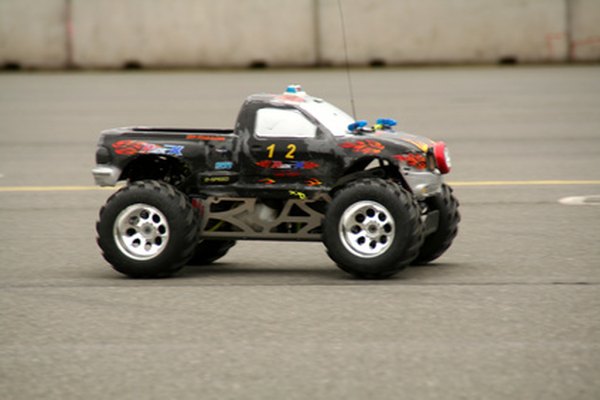
Making a simple generator is easier than the average handyman may think. An ambitious hobbyist can make a perfectly functional generator out of common metals and a few magnets, but the easiest way for most would be to salvage and re-purpose an electric motor or alternator from a junk car or home appliance. Using salvaged electric motors, you can create enough energy from renewable sources to contribute to or even fully cover your home electricity needs. Simple generators can yield power using any source of rotary motion, from windmills to geothermal pistons. Regardless of your location, there is likely to be a source of passive energy to be tapped.
- Wrench set
- Screwdriver set
- Wire cutters
- Two Vise-Grips
- Multimeter
- Workbench
When looking for motors to salvage for your homemade generator, look for devices that aren't heavily corroded. If the outside is rusted through, chances are good the inside is junk.
You can use old bike parts to link your generators to your kinetic energy sources and create gear ratios that have the generators rotating at their optimal RPMs.
Wear goggles at all times when you are cutting metal.
Have a professional electrician attach the generator(s) to your home power grid, ensuring that all building and safety codes are met.
It is possible to generate lethal levels of energy with even improvised generators. Have an electrician review and adjust your work for safety, and take all necessary precautions for working with dangerous voltage, such as non-conducting tools, gloves and boots.

Locate your nearest source of scrapped appliances and/or vehicles where you are likely to salvage an electric motor or engine. Washing machine motors, dryer motors and car alternators are your best bets. You can even create a ceiling fan or electric fan generator if you find the right motors. For smaller scale motors, you can check broken remote-control cars and other children's motorized toys. Bring your multimeter with you, and your kit of wrenches and screwdrivers. You will also need wire cutters to extract motors that are soldered in place.
Unscrew the casing of the device you are trying to extract the motor from. Remove the outer shell of the device and look for the motor with a flashlight. If you are unfamiliar with electrical devices, look over some pictures of electric motors to help identify the part. In general, a motor can be identified by the fact that it will have two wires leading to it, a roughly cylindrical chassis and a drive shaft that moves other parts. Once you have identified the part, you'll need to unscrew any mounting brackets holding the unit in place. Depending on the types of fasteners used you may also have to use a wrench to loosen some bolts. The power wires will either be soldered or screwed into the device; either way, the extra length of wire will be helpful, so use your wire cutters to cut the wires, taking the maximum length of wire possible. In most cases, the drive shaft will simply come unattached by moving the motor from its position. Return to your shop once you have collected several units.
Clamp the drive shaft with a small Vise-Grip. Make a good connection so you can spin the drive shaft moderately quickly and easily with your hand. Clamp the main body of the motor to your workbench, with the clamped drive shaft overhanging the edge of the bench. Strip the wire with the wire cutters, taking care not to cut the wire beneath the plastic coating; draw firmly back when you have cut through the wires' coating to expose an inch from the end of each wire.
Set your multimeter to voltage test mode. While hand-turning the drive shaft, put the multimeter probes on the positive and negative wires of the motor. If you are unable to determine which is positive and which is negative, don't worry: some multimeters will be able to determine this on their own. If yours cannot, you will simply be shown "negative voltage in error" as you turn the motor/generator. Since you are the one applying the work (by turning the drive shaft), the motor will then produce a magnetic field and current, becoming a generator instead. If the motor is in working condition, your multimeter should indicate a voltage.
Things You'll Need
Tips
Warnings
References
Tips
- When looking for motors to salvage, look for devices that aren't heavily corroded. If the outside is rusted through, chances are good the inside is junk.
- You can use old bike parts to link your generators to your kinetic energy sources and create gear ratios that have the generators rotating at their optimal RPMs.
Warnings
- Wear goggles at all times when you are cutting metal.
- Have a professional electrician attach the generator(s) to your home power grid, ensuring that all building and safety codes are met.
- It is possible to generate lethal levels of energy with even improvised generators. Have an electrician review and adjust your work for safety, and take all necessary precautions for working with dangerous voltage, such as non-conducting tools, gloves and boots.
About the Author
Daniel R. Mueller is a Canadian who has been writing professionally since 2003. Mueller's writing draws on his extensive experience in the private security field. He also has a professional background in the information-technology industry as a support technician. Much of Mueller's writing has focused on the subjects of business and economics.
Photo Credits
washing machine image by andrey polichenko from Fotolia.com
